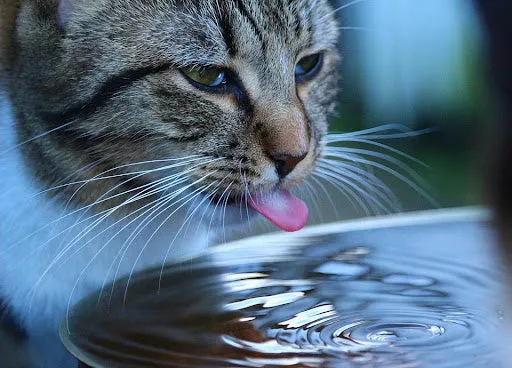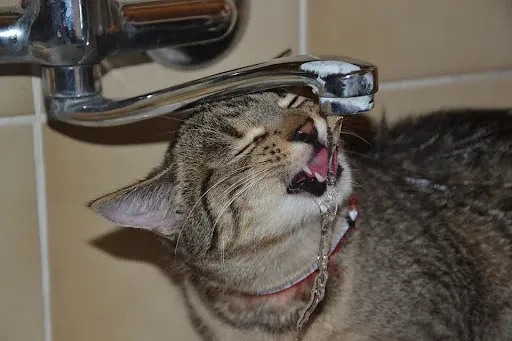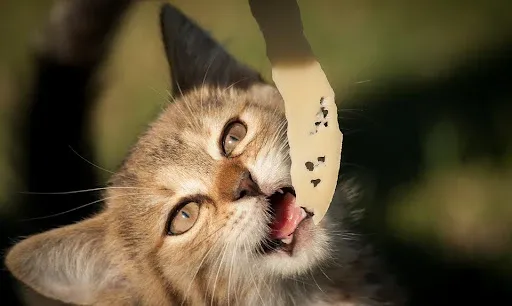Many cat owners notice their kittens ignoring the water bowl, assuming it’s just picky behavior. However, kitten not drinking water can lead to serious dehydration risks, especially for growing felines. Proper hydration supports kidney function, digestion, and overall vitality in young cats.
New kitten parents often face this challenge alongside other basics like litter training. For instance, check out our guide on how to teach a kitten to drink water for step-by-step advice. Staying proactive ensures your furry friend thrives without health setbacks.
How Much Water Does a Kitten Need Daily?
Kittens require about 50ml of water per kilogram of body weight daily, factoring in moisture from food and metabolic needs. This guideline comes from veterinary recommendations by organizations like the American Veterinary Medical Association (AVMA). Puppies and kittens in development stages are particularly vulnerable to imbalances.
Under-hydration can cause lethargy, dry gums, or urinary issues. Monitor intake closely, especially if your kitten weighs around 1-2kg, meaning 50-100ml total from all sources.
 Kitten reluctantly lapping water from bowl with disdainful expression
Kitten reluctantly lapping water from bowl with disdainful expression
Common Reasons Why Your Kitten Avoids Water
Cats instinctively prefer running or fresh water, mimicking wild streams. Several factors contribute to a kitten not drinking water:
- Bowl accessibility: Place bowls in quiet, easy-to-reach spots away from litter areas. Cats avoid effort for stagnant water.
- Cleanliness issues: Dirty bowls with hair or debris deter drinking. Rinse daily and refresh water to keep it appealing.
- Location preferences: Keep water separate from food and litter trays—cats dislike mixing scents.
- Bowl material: Experiment with glass, ceramic, or stainless steel; some felines reject plastic due to taste or static.
Veterinarians note these preferences stem from cats’ sensitive whiskers and taste buds. Observe your kitten’s habits to pinpoint the issue.
Related to routine care, many owners also struggle with litter habits—see tips on kittens using litter box for better daily management.
Practical Solutions to Encourage Drinking
Addressing kitten not drinking water involves simple, effective strategies rooted in feline behavior. Implement these vetted by pet experts:
Multiple Water Stations Around the Home
Scatter shallow bowls in high-traffic areas like play zones or rest spots. In multi-level homes, ensure one per floor. This reduces travel effort, as cats won’t trek far for hydration.
Strategic placement near favorite perches boosts success rates, per ASPCA guidelines on environmental enrichment.
 Kitten eyeing water bowl suspiciously in a home setting
Kitten eyeing water bowl suspiciously in a home setting
Invest in a Cat Water Fountain
Fountains provide circulating, oxygenated water that mimics natural sources. Kittens often paw and drink more from flowing streams. Models with quiet pumps work best for skittish young cats.
Once accustomed—usually within days—they prefer fountains over static bowls, maintaining freshness automatically.
Tap Running Water as a Game
Leverage cats’ fascination with faucets. Run lukewarm water briefly several times daily, rewarding drinks with praise or treats. This builds positive associations and increases intake through play.
For litter training parallels, explore how to teach cat use litter box to reinforce good habits.
 Kitten eagerly drinking from running faucet with focused expression
Kitten eagerly drinking from running faucet with focused expression
Add Ice Cubes to Meals
Freeze low-sodium broth into cubes and mix into wet food. As they melt, kittens lick flavored moisture, disguising plain water. This gradual method appeals to picky eaters.
Transition to Wet Food Diet
Wet food offers 70-80% moisture versus 10% in kibble, naturally boosting hydration. High-quality options with animal proteins support obligate carnivores. Gradually mix to avoid digestive upset.
Dry-only diets risk obesity, diabetes, and low hydration due to high carbs. Vets recommend 50%+ animal protein, under 3% carbs.
 Kitten intrigued by cheese near food bowl
Kitten intrigued by cheese near food bowl
Safe proteins include chicken, turkey, fish like salmon or tuna. Limit ham or bacon due to fat. Avoid veggies as main sources—cats need taurine from meat.
For housing tips that complement care, learn how to get a cat to use a cat house.
Benefits of Hydration-Focused Nutrition
A moisture-rich diet prevents dehydration while delivering balanced nutrition: high protein/fat, low carbs. This aligns with feline biology, reducing risks like kidney strain or hairballs.
Kittens fed appropriately show better energy, coat shine, and immunity. Track weight weekly using charts from the World Small Animal Veterinary Association (WSAVA).
 Energized kitten showcasing healthy hydration from wet food diet
Energized kitten showcasing healthy hydration from wet food diet
Bonus: Less reliance on bowls means easier monitoring. Combine with can you teach a cat to sit for fun training sessions.
Signs of Dehydration and When to See a Vet
Watch for dry gums, sunken eyes, appetite loss, or excessive meowing. Severe cases show skin tenting or infrequent urination. Prompt vet visits prevent UTIs, kidney disease, or diabetes.
Consult professionals for tailored advice, especially post-weaning.
Final Thoughts on Kitten Hydration
Combating kitten not drinking water requires patience, observation, and tweaks like fountains or wet food. Consistent efforts ensure lifelong health. Start today for a vibrant companion—consult your vet for personalized plans and explore more cat care guides!
References:
- American Veterinary Medical Association (AVMA): Feline Hydration Guidelines
- ASPCA: Environmental Enrichment for Cats
- Pixabay sources for images (rihaij, kropekk_pl, notKaro)
